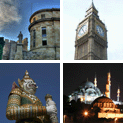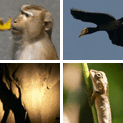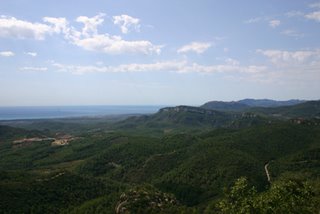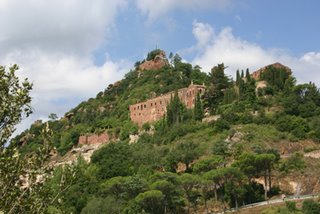The truth is that you will not be able to think about the paradox of this globalized world until you reach a interior of a plane departing from an italian airport with chineses hostesses speaking english, and stopping in the other side of the world, without europeans and people talking in Thai. Fascinating.
Our first feeling when we reached the land was exhaustion. We spended the fly watching movies and we were not able to rest, anyway we put up with our bodies until we reach Bangkok. The first question after getting the baggage was: How can we reach the hotel?
In our condition of beginners, exhausted travelers and new boys at town, we accepted a car, also named 'limusine', that in fact was a spacious car with leather seats... the price: incredible expensive, but by the way, we wanted a way to reach the hotel and we started the travel plenty of money :-). The price included an english guide that will guide us to the best places of Bangkok, so we accepted the deal.
When we saw the international vaccine center, the doctor told us to follow the following rules about eating and drinking:
- Don't drink non-bottled water, of bottled watter not opened by us
- Don't drink anything with ices, because they can be made of tap water
- Don't eat salads or already peeled fruit
- Don't eat any cold dish at general
When we reach the hotel we broke the second law, because the receptionist offered to us a cold iced orange juice, and of course, we cannot spurn it... that was our first step to perdition. At the end of the trip we broke both all the previous laws and others that we'll explain in previous posts, but lucky of us, we didn't suffer any serious health problem.
About the hote, that was named Shangai Inn, we have to say that it was extraordinary. The rooms are decored with good taste with a succeded chinese style. Some of the details are simple, but anyway we have to say that at general is a very beautiful hotel. You can take a look at some shots in the following links: the bed, the dresser, the washbasin y the outside. The location of the hotel is also interesing, in the middle of Chinatown. You can enjoy this crowded and centric red-light district one step from the hotel.
Before leaving the baggage on the room, we spend our morning looking at Wat Arun. The building if great, and it was builded to commemorate the victory of Thai army over Burma more that a century ago. To reach it we stroll around Chinatown reaching the river. Then we catch a ferry that give you at the same Wat.
We felt so sleepy, so we ate something quick and then we sleep a good siesta back at the hotel, because at the afternoon we had a date with the guide hired at the arrival...
We met our guide an hour later. She was a kind girl with the best english all over Thailand (at least the person we met with the best), and she showed to us the most famous places of Bangkok.
We started with the reclined buddha at Wat Pho, where we found an spectacular buddha of 46 meters long and 15 meters high. Following it we visit the temple and around.
After looking a few more interesting places with our car she used her chance to 'go shopping'. This is a usual way, so they offer you a relative good price for the guide, and then they send you to a few shops around your tour. If you know it in advance there is no problem about it, but if you are not aware of that, this can be a awkward situation, as we knowed the next day with the tuk-tuk's (a motorcicle with seats at the back like a sofa). At the end of the journey we spent 300€ purchasing a suit, two pants, shirts and ties and a zafire ring.
You can found the photographies of this day at my photography blog.







